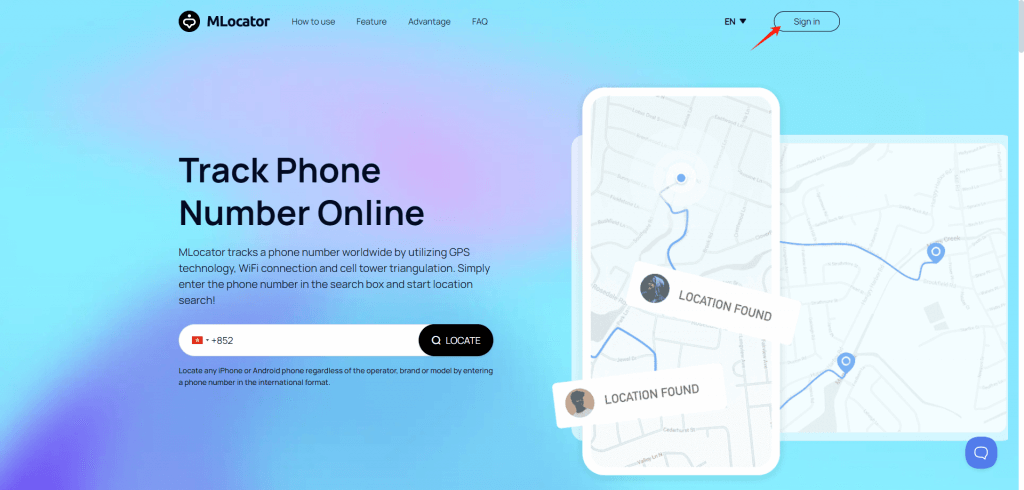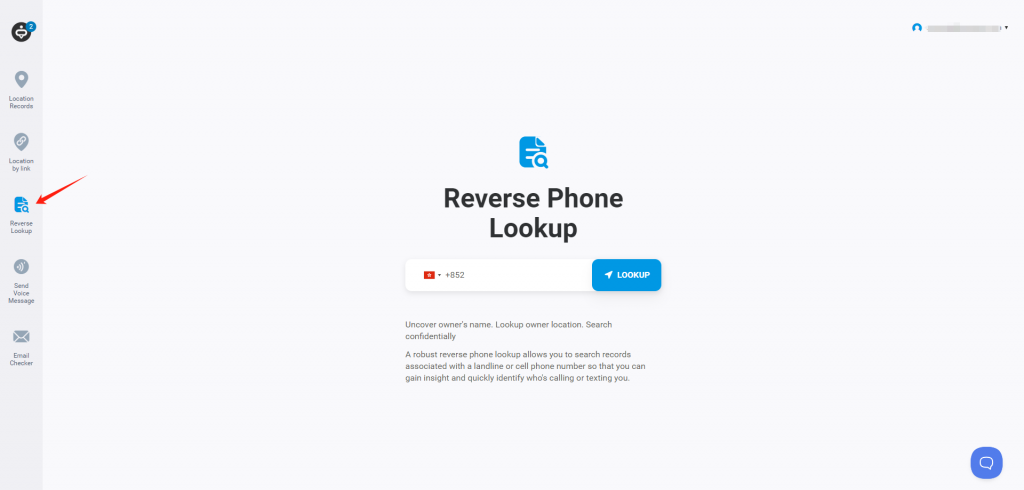Receiving a phone call from a number that is not familiar or is unrecognizable in the Philippines can be quite alarming. As we know, it can be a call of curiosity, a call of concern or a call of caution, knowing the identity of the caller sometimes is important.
In this blog, we will discuss how to find out who called you from an unknown number and how you can avoid such calls in the future.

How to Find Out Who Called Me From This Phone Number in the Philippines
If you’re trying to determine who called me from this phone number in the Philippines, there are several methods you can use. Here’s a detailed guide on how to do it:
Use a Reverse Phone Lookup
Using a Reverse Phone Lookup service is one of the best methods to identify the caller in your call list. There are many services, such as MLocator, which provide people with a reverse phone lookup that is aimed at helping them find out the name of an unknown caller.
Steps:
- Go to MLocator and sign in to your account for you to access the platform.

- Enter the unknown phone number in the reverse phone lookup search box.

- The system will then search the records of the identity database from a pool of millions of telephone records to match the number.

- If a match is found, detailed information about the caller, including the name, place, and possibly address, will be presented to you.

- Based on the facts gathered the next course of action would be to block the number, report the person, or call them back.
The fact that MLocator is a reverse phone lookup is useful because it accesses the database from various sources to provide the most current information. Whether it is an unknown local number or a constant telemarketing call, this tool will help you receive the necessary information to proceed.
Search the Phone Number Online
Making a search on Google and entering the phone number is also a good option to find out information. Typing the number in Google can lead to a web forum, website, or social media post where individuals have either talked or complained about the number. This can be especially helpful if the number is associated with scams or telemarketing.
There are several websites and online communities in the Philippines where people share information about unknown numbers and post detailed accounts by other people; this would help you understand the safety of returning a call.
Steps:
- Open the Google search engine on your browser.
- Enter the unknown number into the search bar.

- Look through the results for any forums, websites, or social media posts discussing the number.
- Use the details found to decide whether the number is trustworthy or should be avoided.
Check Social Media
Facebook, Twitter, and LinkedIn are some of the most significant social networks, through which one can easily recognize unknown callers. By typing the phone number in the search box, there is a possibility that you will find profiles associated with the entered number.
Most people link their phone numbers to social media profiles, for security and recovery of lost, stolen, or forgotten passwords. If the number is associated with any social media accounts, you’ll be able to see the name of the caller, pictures, and even posts revealing who the person is.
Steps:
- Open Facebook, Twitter, or LinkedIn on your device.
- Type the unknown phone number into the search bar of the platform.

- Scroll through the results of the search for any accounts associated with this number.
- If a profile is found, then gather information about the caller from the name, photos, and posts linked to the profile.
Download a Caller ID App
Another way to track no-caller ID phone calls and explain the purpose of the unknown number appearing on the list is not to wait for identification when using the Caller ID application. One of these applications is Whoscall. This one can show the details of the person calling when the call is still ringing and you do not necessarily have to have the number saved under your phonebook. Such apps include having a massive data set and AI-driven algorithms for detection meant to help you distinguish which call is critical and which might be spam.
This is very useful because of the database that the app uses and improves its ability to block all unwanted calls and prevent scams from targeting the users.
Steps –
- Visit the App Store or Google Play Store and download Whoscall.

- Open the app and follow the setup instructions to grant necessary permissions.
- Ensure that the Caller ID feature is activated to identify incoming calls.

- When a call comes in, check the information provided by Whoscall to decide whether to answer or block the call.
6 Tips to Protect Yourself from Unknown Calls
To safeguard yourself from unknown or potentially harmful calls, consider the following tips:
- Don’t Answer Unknown Numbers
If you have received a call from an unknown number, it is advisable to let the call ring out to the answering machine. This approach also protects you from directly interacting with potential scammers who can manipulate and deceive you into releasing your details or making an unplanned purchase. If it is a very important call then the caller will leave a message.
- Use Call Blocking Features
Currently, call-blocking is available as a stock feature on most smartphones, and most smartphone manufacturers incorporate it into their devices. Use these to blacklist no caller IDs or those people who continually called without leaving any message behind.
- Register with the National Do Not Call List
If you live in the Philippines, the National Do Not Call List can be used to reduce the telemarketing calls you receive. This list is meant to prevent marketers’ calls, therefore making it easier for you to have an unbothered time. Although, it is noteworthy that it will not work effectively in preventing all unsolicited calls it is an effective measure nonetheless.
- Install a Spam-Blocking App
Such apps as Whoscall not only recognize such numbers but also blacklist numbers that are known to call constantly. This also enhances the security against calls that one does not want to receive.
- Report Suspicious Numbers
In case of a scam call, one is advised to report the number to the local law enforcement agencies or to online groups. This is helpful to others in order not to experience such a problem.
- Educate Yourself on Scams
To sum it up, it is very wise to stay updated with new phone scams in the Philippines to be safe than to be sorry. It is also crucial to read news and use internet resources to find out about new tricks employed by fraudsters. If you know about those schemes, you will be in a position to find such signs early and take the necessary precautions in order to safeguard yourself or your family members from victimization.
FAQ
How to find the owner of a phone number?
To find the owner of a phone number, you can use reverse phone lookup services like TrueCaller, Whitepages, or Spokeo. These services search public databases and online profiles to match the number with its owner. You can also try searching the number on search engines or social media platforms. If the number is registered, the owner’s name and details may be available.
How can I identify the caller’s name?
You can identify a caller’s name using apps like TrueCaller or Hiya, which display caller IDs for incoming calls. These apps access a vast database of phone numbers and their associated names. Another option is to use a reverse phone lookup service or search the number on social media. Some phone carriers also offer caller ID services that provide the name of the person calling.
How can I check if a number is spam?
To check if a number is spam or not you can try to use a reverse phone lookup service or the applications such as Truecaller that are designed to identify spam numbers. These tools also come with a displayed number of reported numbers, which might be spam or scam calls. You can also check the number online to find feedback if someone else found the number to be dubious. Furthermore, spam blocking is also present in the various phone carriers that can help notify you when they think you got a spam call.
What numbers should you avoid answering?
Do not answer unknown numbers particularly if the numbers are unfamiliar area codes or look like an international call. If a number is reported to be that of a spam caller by applications, then it should also be best avoided. People who repeatedly call but do not leave a voice or speak to anyone on the phone should be ignored as they could be scams or spam. One should avoid answering the telephone when it rings; it is advisable that one should let the call redirect to the answering machine.
Wrap Up
Unknown callers in the Philippines are not as great a problem as it was earlier these days with the right tools and techniques. Some may be specific to reverse phone search, others may be caller ID apps or social networking sites which can assist in preventing you from getting unwanted calls on your phone and keep your data safe.
It is essential to be alert and not be easily caught in phone scams so that at least we can prevent ourselves from falling victim to them.


![How to Find Out Where Someone Works [Proven Ways]](https://www.mobilephonelocator.net/blog/wp-content/uploads/image-197-150x150.png)